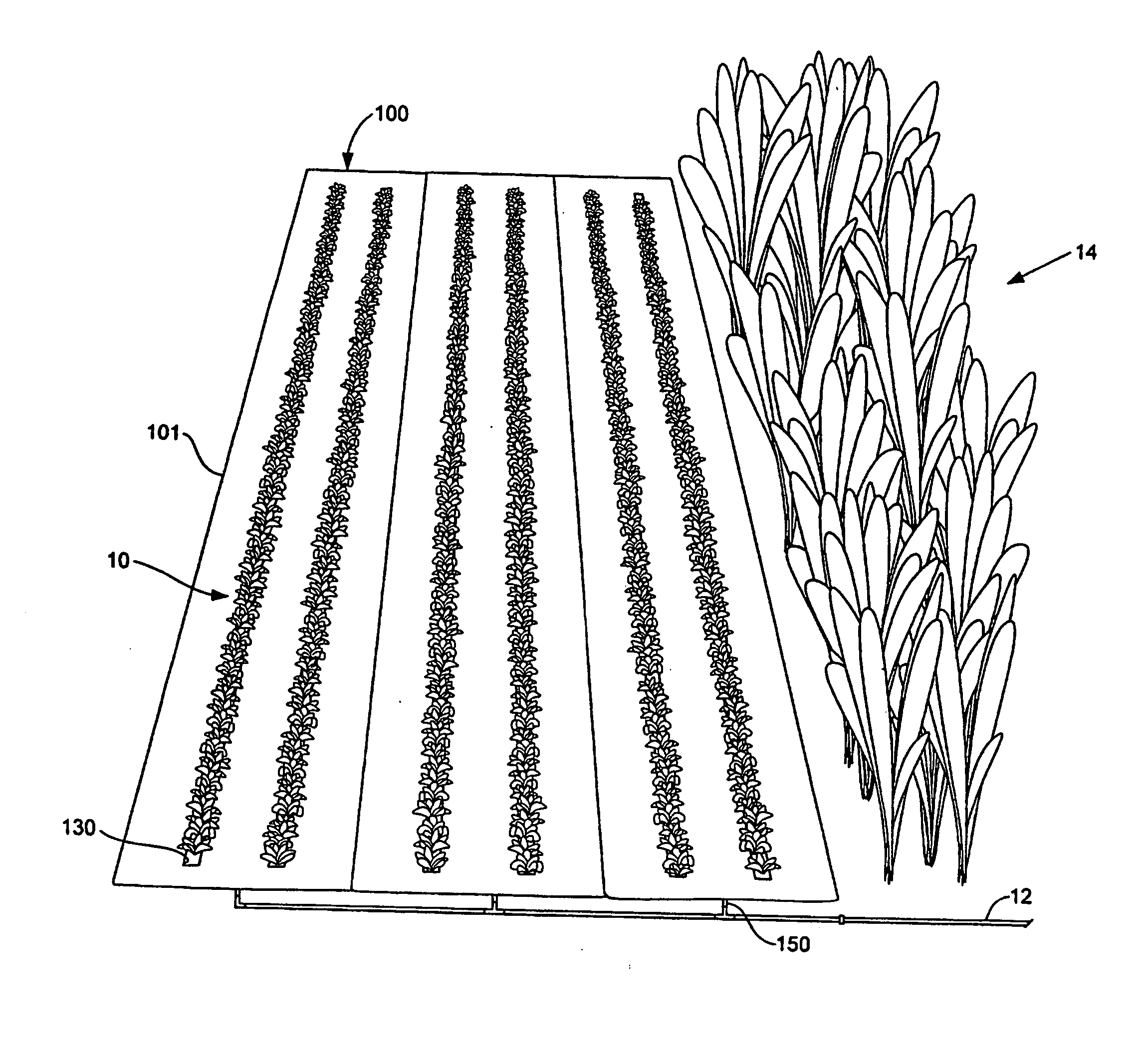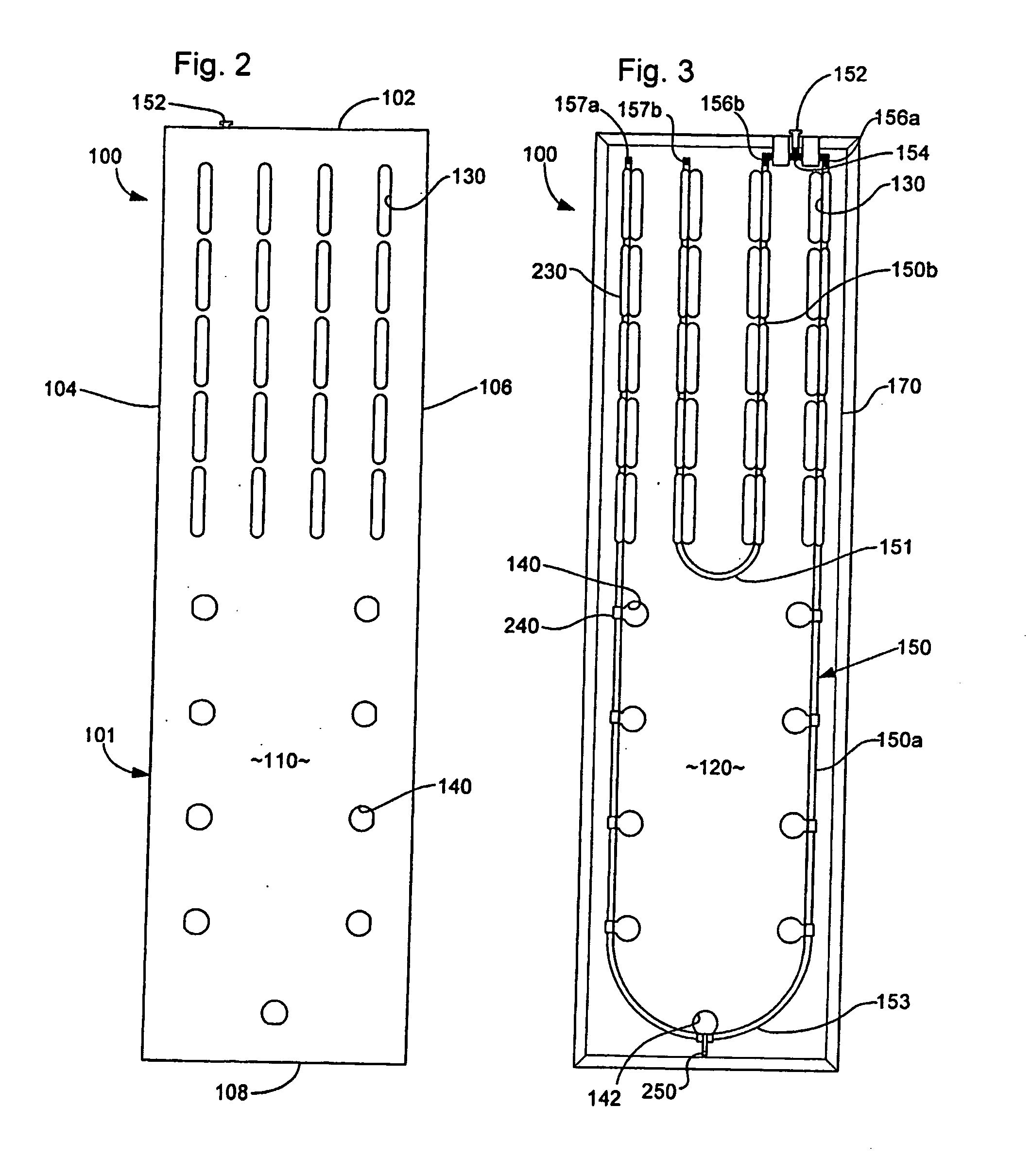Garden weed barrier and watering system
a technology of which is applied in the field of garden weed barrier and watering system, can solve the problems of limiting the movement or dislocation of prior art devices, affecting the appearance of plants, and affecting the appearance of plants, and achieves the effect of simple rolling or folding
- Summary
- Abstract
- Description
- Claims
- Application Information
AI Technical Summary
Benefits of technology
Problems solved by technology
Method used
Image
Examples
Embodiment Construction
[0047] Turning more particularly to the drawings, FIG. 1 illustrates three identical weed barrier and garden watering systems 100 (hereinafter referred to as “weed barrier”), each in accordance with the present invention. The weed barriers 100 illustrated are of the type used with row crops and are shown positioned side-by-side in a typical garden setting. The weed barrier includes a sheet of vapor-permeable material 101 such as ground cloth or landscape fabric used in the horticulture industry. Openings, or planting spaces 130, are provided along the length of the sheet 101 to provide space for plants 10 to grow. As will be shown in detail in subsequent figures, water is supplied to the plants via one or more water-permeable tubes or hoses 150 attached to the underside of each weed barrier 100 to deliver water to garden plants 10 contained within the planting spaces 130. In the case of multiple weed barriers 100 as shown in FIG. 1, the permeable hoses 150 of each device may be link...
PUM
| Property | Measurement | Unit |
|---|---|---|
| width | aaaaa | aaaaa |
| diameter | aaaaa | aaaaa |
| internal diameter | aaaaa | aaaaa |
Abstract
Description
Claims
Application Information
 Login to View More
Login to View More - R&D
- Intellectual Property
- Life Sciences
- Materials
- Tech Scout
- Unparalleled Data Quality
- Higher Quality Content
- 60% Fewer Hallucinations
Browse by: Latest US Patents, China's latest patents, Technical Efficacy Thesaurus, Application Domain, Technology Topic, Popular Technical Reports.
© 2025 PatSnap. All rights reserved.Legal|Privacy policy|Modern Slavery Act Transparency Statement|Sitemap|About US| Contact US: help@patsnap.com



